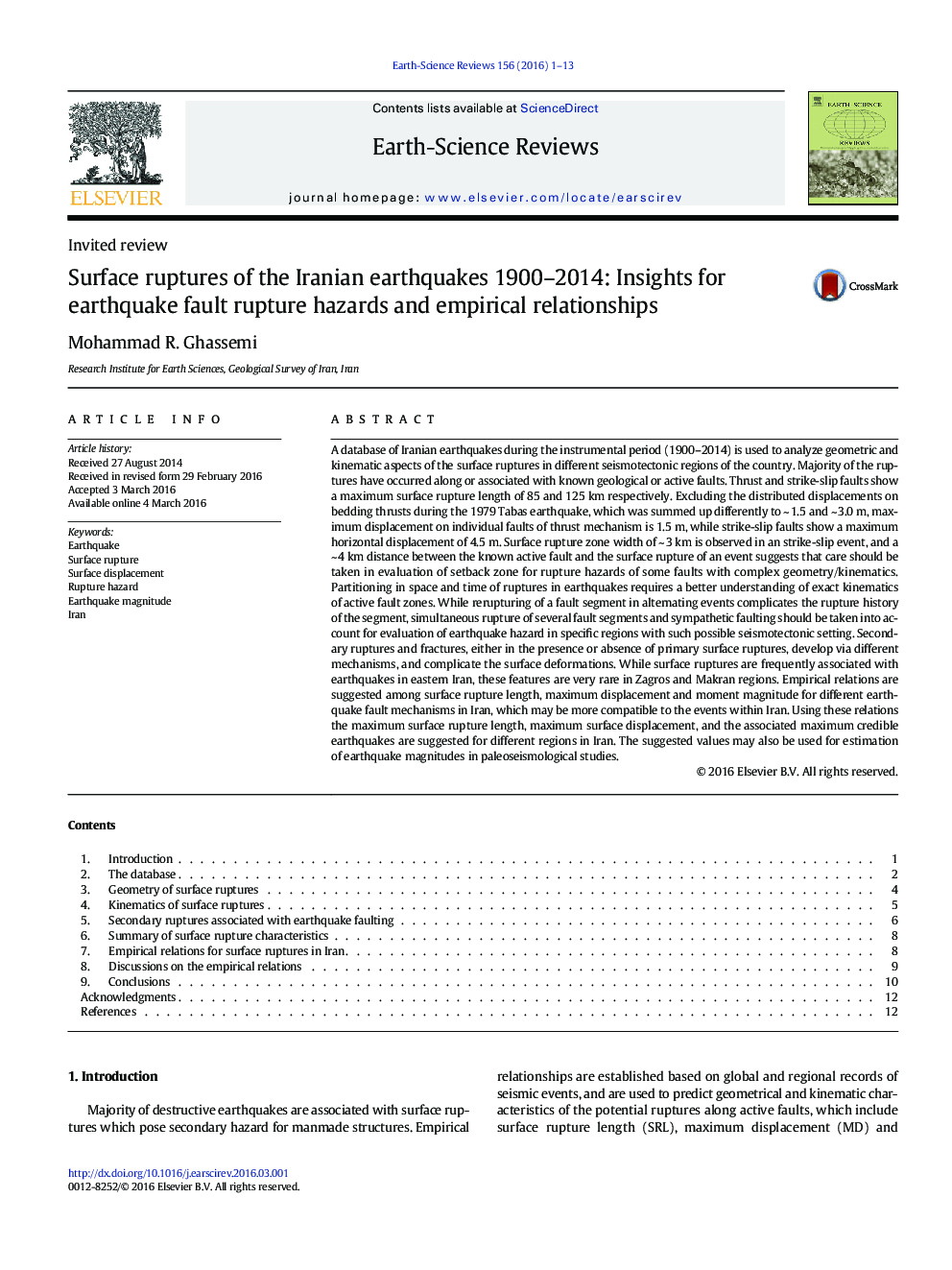| Article ID | Journal | Published Year | Pages | File Type |
|---|---|---|---|---|
| 6442951 | Earth-Science Reviews | 2016 | 13 Pages |
A database of Iranian earthquakes during the instrumental period (1900-2014) is used to analyze geometric and kinematic aspects of the surface ruptures in different seismotectonic regions of the country. Majority of the ruptures have occurred along or associated with known geological or active faults. Thrust and strike-slip faults show a maximum surface rupture length of 85 and 125Â km respectively. Excluding the distributed displacements on bedding thrusts during the 1979 Tabas earthquake, which was summed up differently to ~Â 1.5 and ~Â 3.0Â m, maximum displacement on individual faults of thrust mechanism is 1.5Â m, while strike-slip faults show a maximum horizontal displacement of 4.5Â m. Surface rupture zone width of ~Â 3Â km is observed in an strike-slip event, and a ~Â 4Â km distance between the known active fault and the surface rupture of an event suggests that care should be taken in evaluation of setback zone for rupture hazards of some faults with complex geometry/kinematics. Partitioning in space and time of ruptures in earthquakes requires a better understanding of exact kinematics of active fault zones. While rerupturing of a fault segment in alternating events complicates the rupture history of the segment, simultaneous rupture of several fault segments and sympathetic faulting should be taken into account for evaluation of earthquake hazard in specific regions with such possible seismotectonic setting. Secondary ruptures and fractures, either in the presence or absence of primary surface ruptures, develop via different mechanisms, and complicate the surface deformations. While surface ruptures are frequently associated with earthquakes in eastern Iran, these features are very rare in Zagros and Makran regions. Empirical relations are suggested among surface rupture length, maximum displacement and moment magnitude for different earthquake fault mechanisms in Iran, which may be more compatible to the events within Iran. Using these relations the maximum surface rupture length, maximum surface displacement, and the associated maximum credible earthquakes are suggested for different regions in Iran. The suggested values may also be used for estimation of earthquake magnitudes in paleoseismological studies.
